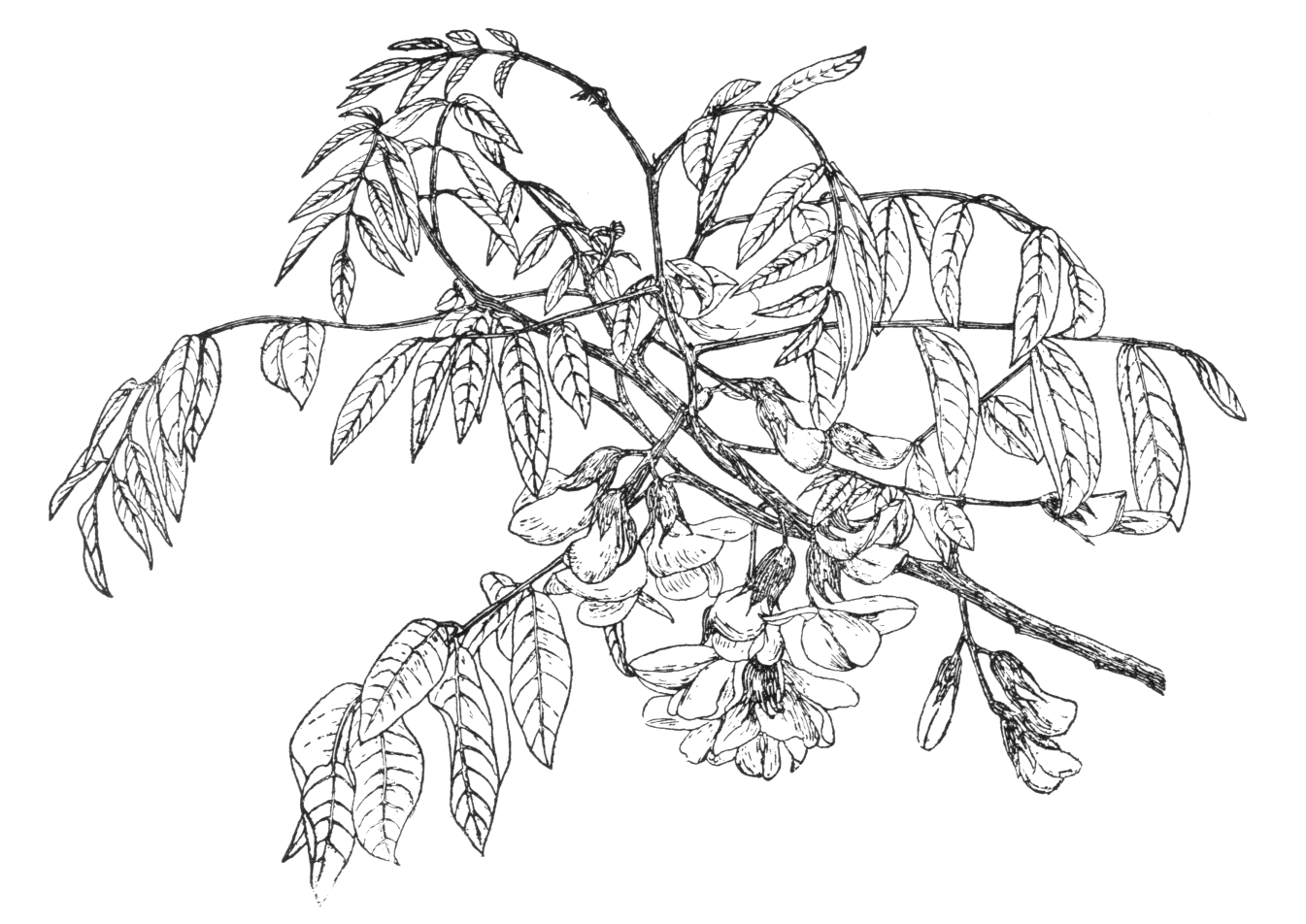Robinia kelseyi
Credits
Article from Bean's Trees and Shrubs Hardy in the British Isles
Recommended citation
'Robinia kelseyi' from the website Trees and Shrubs Online (treesandshrubsonline.
Genus
A lax-habited, deciduous shrub or small tree, with glabrous, slender branches. Leaves pinnate, 4 to 6 in. long; leaflets nine or eleven, oblong to ovate, 1 to 2 in. long, 1⁄3 to 5⁄8 in. wide, pointed, glabrous. Flowers brightly rose-coloured, in small clusters at the base of the young twigs; these clusters are sometimes simple racemes of three to eight flowers, but they are frequently forked or triplicate, the stalks always covered with glandular hairs. Each flower is 3⁄4 to 1 in. long, with a rounded standard petal 3⁄4 in. across; calyx 1⁄4 in. long, glandular-hairy, teeth narrow, awl-shaped. Pods 2 in. long, 1⁄3 in. wide, covered with reddish gland-tipped bristles 1⁄6 in. long. Bot. Mag., t. 8213.
The origin of this beautiful robinia is not definitely known. It was put into commerce about 1901, by Mr Harlan P. Kelsey, of Boston, USA, who informs me in a letter that it was ‘discovered in our nursery apparently growing spontaneously. We thought at first it was a cross between R. hispida and R. pseudacacia, but now we think it is a true species that has crept into the collections from the southern Allegheny Mountains.’ It was introduced to Kew in 1903, and is certainly one of the most beautiful shrubs added to gardens in recent years. The flowers appear in great profusion in June, and they are followed by handsome red pods. Its affinity with R. hispida, especially the smooth-branched form, is apparent, but it is abundantly distinct. Judging by its behaviour at Kew it can be made into a small tree, but it is very brittle. Increase is easily effected by grafting on roots of R. pseudacacia in spring.

